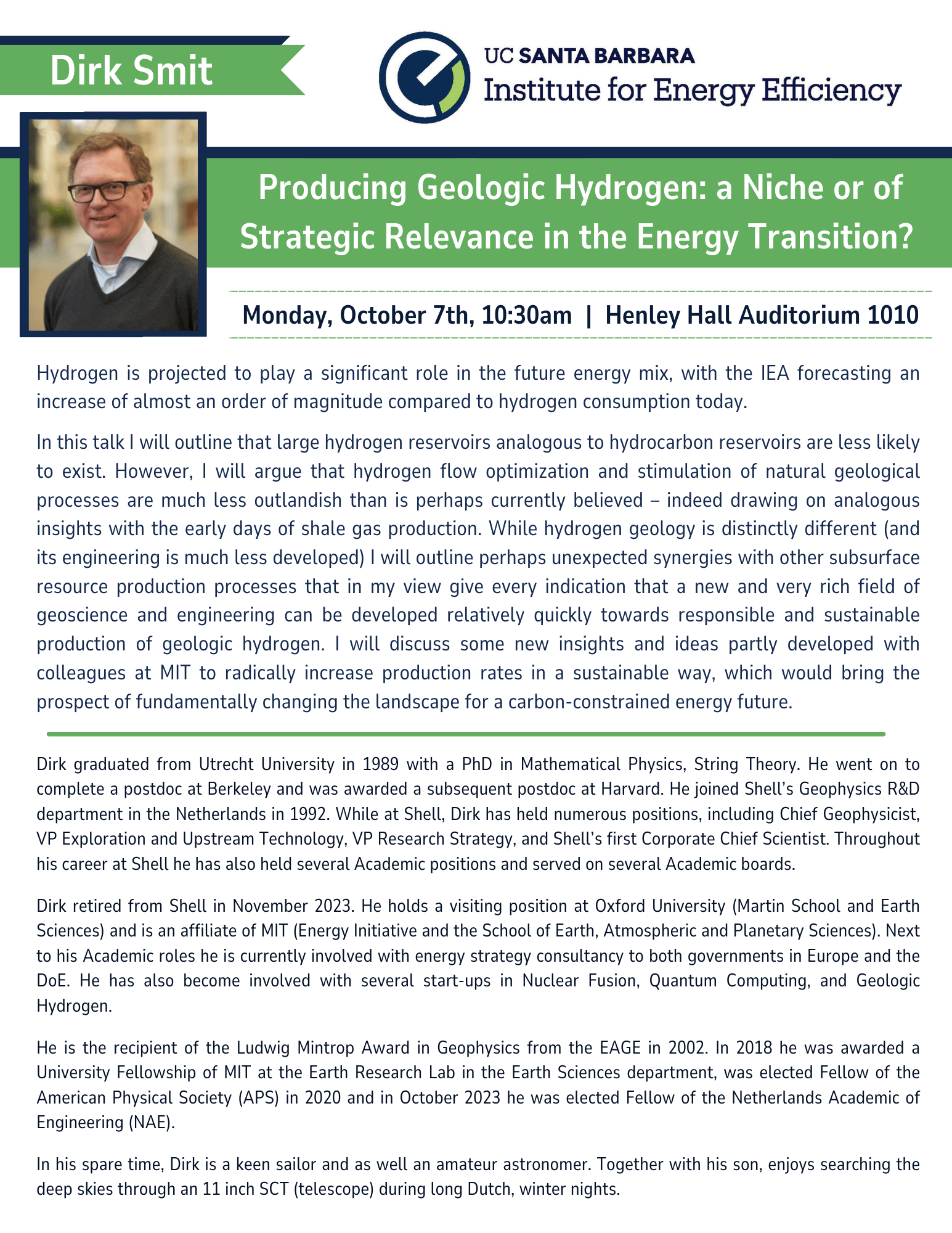
Abstract
Hydrogen is projected to play a significant role in the future energy mix, with the IEA forecasting an increase of almost an order of magnitude compared to hydrogen consumption today. This increase is driven by the possible dual use of hydrogen: to provide a clean or green high energy density vector as well as a clean “chemical building block” towards more circular sustainable chemical manufacturing industries. Current technology to produce large volumes of green hydrogen are challenged mainly because of the large infrastructure needed but also perhaps fundamentally in the higher cost to produce. Without a realistic view to low-cost, bulk volume hydrogen, the energy transition may significantly slow down as the decarbonization of energy dense industries will then to sharp additional increases in the demand for green power on top of the need to decarbonize existing power grids. The possibility of producing hydrogen generated in situ from iron-rich rocks in the subsurface while not new, may help provide diversity in decarbonization path ways creating more optionality in businesses and economic models to enable scale up of the Energy Transition. However, most geologically based generation mechanisms are relatively slow hence relative to the reactivity of hydrogen in the subsurface or to its high diffusive nature. In this talk I will outline that large hydrogen reservoirs analogous to hydrocarbon reservoirs are less likely to exist. However, I will argue that hydrogen flow optimization and stimulation of natural geological processes are much less outlandish than is perhaps currently believed – indeed drawing on analogous insights with the early days of shale gas production. While hydrogen geology is distinctly different (and its engineering is much less developed) I will outline perhaps unexpected synergies with other subsurface resource production processes that in my view give every indication that a new and very rich field of geoscience and engineering can be developed relatively quickly towards responsible and sustainable production of geologic hydrogen. I will discuss some new insights and ideas partly developed with colleagues at MIT to radically increase production rates in a sustainable way, which would bring the prospect of fundamentally changing the landscape for a carbon-constrained energy future.
Biography
Dirk graduated from Utrecht University in 1989 with a PhD in Mathematical Physics, String Theory. He went on to complete a postdoc at Berkeley and was awarded a subsequent postdoc at Harvard University. He joined Shell’s Geophysics R&D department in the Netherlands in 1992.
While at Shell he has held numerous positions, including Chief Geophysicist for Shell UK, and Vice President Exploration and Upstream Technology. From 2015 as VP Research Strategy his work shifted to “systems thinking and engineering” aspects of the energy transition to a net-zero emission system and became Shell’s first Corporate Chief Scientist (Chief Science Officer) in 2019.
Throughout his career at Shell he has held several Academic positions and has served on several Academic boards: an Adjunct Professor in Integrated Energy Systems at the Indian Institute of Science in Bangalore, India. Dirk served as a member of the National Research Council on Solid Earth Observations in the US between 2004 and 2007 and has been for 9 years a member of the National Dutch Science Board for Basic Science in the Netherlands. He also has been a member of the MIT Presidential Advisory Committee until 2021.
He retired from Shell in November 2023. He holds a visiting position at Oxford University (Martin School and Earth Sciences) 2024 and is an affiliate of MIT (Energy Initiative and the School of Earth, Atmospheric and Planetary Sciences). Next to his Academic roles he is currently involved with energy strategy consultancy to both governments in Europe and the DoE. But more hands-on, he has become involved with several Start-ups in Nuclear Fusion, Quantum Computing, and more recently with in Geologic Hydrogen. He is elected Fellow of the American Physics Society and of the Dutch National Engineering Academy.
He is the recipient of the Ludwig Mintrop Award in Geophysics from the EAGE in 2002. In 2018 he was awarded a University Fellowship of MIT at the Earth Research Lab in the Earth Sciences department, was elected Fellow of the American Physical Society (APS) in 2020 and in October 2023 he was elected Fellow of the Netherlands Academic of Engineering (NAE).
In his spare time, Dirk is a keen sailor and as well an amateur astronomer. Together with his son, enjoys searching the deep skies through an 11 inch SCT (telescope) during long Dutch, winter nights.